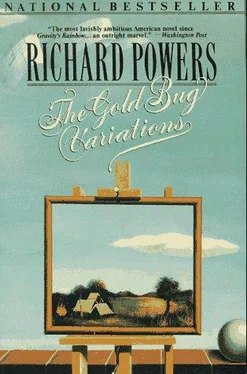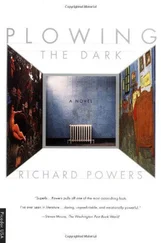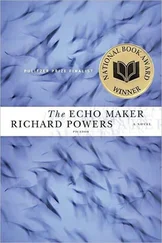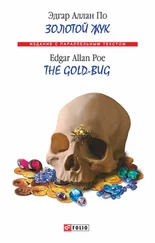Richard Powers - Gold Bug Variations
Здесь есть возможность читать онлайн «Richard Powers - Gold Bug Variations» весь текст электронной книги совершенно бесплатно (целиком полную версию без сокращений). В некоторых случаях можно слушать аудио, скачать через торрент в формате fb2 и присутствует краткое содержание. Год выпуска: 1991, Издательство: Harper Perennial, Жанр: Современная проза, на английском языке. Описание произведения, (предисловие) а так же отзывы посетителей доступны на портале библиотеки ЛибКат.
- Название:Gold Bug Variations
- Автор:
- Издательство:Harper Perennial
- Жанр:
- Год:1991
- ISBN:нет данных
- Рейтинг книги:5 / 5. Голосов: 1
-
Избранное:Добавить в избранное
- Отзывы:
-
Ваша оценка:
- 100
- 1
- 2
- 3
- 4
- 5
Gold Bug Variations: краткое содержание, описание и аннотация
Предлагаем к чтению аннотацию, описание, краткое содержание или предисловие (зависит от того, что написал сам автор книги «Gold Bug Variations»). Если вы не нашли необходимую информацию о книге — напишите в комментариях, мы постараемся отыскать её.
Gold Bug Variations — читать онлайн бесплатно полную книгу (весь текст) целиком
Ниже представлен текст книги, разбитый по страницам. Система сохранения места последней прочитанной страницы, позволяет с удобством читать онлайн бесплатно книгу «Gold Bug Variations», без необходимости каждый раз заново искать на чём Вы остановились. Поставьте закладку, и сможете в любой момент перейти на страницу, на которой закончили чтение.
Интервал:
Закладка:
Its published name is wildly unassuming: "Keyboard Practice, Part IV. Composed for music lovers to refresh their spirits." One of only a handful of his thousand compositions to be published in his lifetime, in a form he never cared for, although perfected here.
Bach's first biographer tells the story, already thirdhand, of how Count Kaiserling, former Russian ambassador to Saxony, employed a young harpsichordist named Goldberg, one of Bach's star pupils. Goldberg's duties included making soft music in an adjoining room on those frequent nights when the Count had trouble sleeping. The Count commissioned Bach to compose for Goldberg something "of a soft and somewhat lively character," to assist against this periodic insomnia. A musical calmative, a treatment that now consists of two tablets and the low drone of talk radio.
Theme and variations, a form limited to "the sameness of the fundamental harmony" throughout, was just the ticket: sedative, soporific permutations jumping like counted sheep over a stile. From beginning to end, the Goldbergs were conceived, if not as an attempt to sing the listener to sleep, as a catalog that would at least keep the sleepless sufferer company, to hold at theme's length the nightmare of wakefulness. The best one can be is either doctor or musician. Both, if possible.
For this work, legend has it, Bach was rewarded with a goblet of one hundred gold louis, more than he was paid for scores of other works combined. The ambassador got off cheaply, taking possession of one of the supreme works in music history. Throughout the rest of his life, he referred to the piece as if it were his own composition. "Dear Goldberg, do play me one of my variations."
So much for the reading tale. The stuff any librarian can turn up. As for the architecture: the Goldbergs are twice as long as any previous variation collection. They form the most virtuosic and demanding piece for solo keyboard in any form until middle Beethoven. The set is built around a scheme of infinitely supple, proliferating relations. Each of the thirty is a complete ontogeny, unfolding until it denies that it differs at conception from all siblings by only the smallest mutation. Together they achieve a technical inventiveness and profundity unsurpassed in the rest of music, a catalog hinting at every aspect of tonal experience.
And the whole archive is hatched from an insipidly simple theme. One musicologist tried to convince a fellow scholar that the germ aria, a heavily ornamented period piece, was not even Bach's own. The eminent colleague disappeared into his study, emerging some time later (like Von Neumann affirming the obvious) shaking his head. "You're right. It's a piece of French fluff."
Bach's first act out of the block is to strip down this aria bacterium to its even simpler bass. For the longest time, until Ressler pointed it out, I couldn't hear how the wayward offspring had anything to do with parent. That's because the variations aren't descended from the aria per se. Rather, the aria itself is just another variation, built upon the all-generating, sarabande Base:

The Goldbergs are not even variations in the modern sense, but an imperceptibly vast chaconne, an evolutionary passacaglia built on the repetition and recycling of this Base. Music that goes nowhere, that simply is, hovering around the fixed center of diatonic time.
A line of pitches can be heard as a melodic sequence or as a series of harmonies. Bach's Base is both, at times even hybridizing horizontal and vertical. As with 90 percent of standard tonality, it is no more than an exploration of the possibilities hidden in the scale. The sequence is symmetrical to an extreme: two paired, complementary halves of sixteen notes each. Each half comprises four similar-shaped paired phrases — tension, release, tension, release — four notes long. Each pair of four-note phrases creates an eight-note harmonic section, four in all, tracing the fundamental journey from tonic to dominant to relative and back to tonic. Sixteen twos, eight fours, four eights, and two sixteens: with repeats, the trip from home and back takes sixty-four notes.
Dr. Ressler — already fighting gnostic tendencies — must have loved discovering in Bach two paired strands, four phrase-building blocks, a sixty-four-codon catalog. Bach had a habit of imbedding mystic numbers in his compositions; these ones happen to correspond to the number-game nature imbeds in its own. But this coincidence was the least of the qualities that made this music Ressler's best metaphor for the living gene.
I begin to hear, too late, how the Base's symmetry ripples through the piece, unfolding ever-higher structures, levels of pattern, fractal self-resemblances. Having made my layman's survey of the synthesis his science was after, I begin to hear in this encyclopedia of transcription, translation, and self-replication something of the catalog he carried around inside of himself for a quarter century.
Like the master molecule and its living scaffolding, the Goldberg schema is a self-spun hierarchy. First: the transcription of the Base into each variation, even those transposed to relative minor, is faithful, either note for note or harmony for harmony. Oh, it strays from its source, sometimes implying the sarabande while straining to leave it, sometimes filling out the step with jarring accidentals. At times it too becomes a new thing, a new theme, overhauled for all its treading water. But the basic sarabande bass, its thirty-two-note journey, completely informs each child, in turn thirty-two bar-equivalents long. The code is universal throughout creation.
The variations unfold a second level of emerging pattern. Every third variation is a canon, a strict imitation of staggered voices. "Row Row Row Your Boat" self-replication taken to terminal degree. In the first canon, the duplicating voice begins on the same pitch a measure later. In the second canon, the interval between voices is a second: the replication begins one tone higher than the original. The third canon is a canon at the third, and so on through every interval of the major scale plus one — the same scale the theme is built upon. Two canons occur in inversion: whatever happens in the first voice is mirrored upside down in the second. A rising interval is answered by equivalent fall. But in all the canons the situation is the same; the melody harmonizes not with another tune but with itself, a replica of its immediate past and future.
The second voice in every canon is determined: the template first voice right-shifted, transcribed into new scalar position. Two copies twist about each other with helical precision, at ever-increasing steps, coding for their own continuation. Some of the canons are content to be canonical: the template is still audible when the replication arrives. Others push the form's limits, holding a note away from falling into a single voice or mapping out intervals so dissonant that each constrained part seems to insist on its own, discrete decisions — strict, deterministic contrapuntalism forcing freedom.
In each canon but one, strict imitation takes place over a third, persistent, unifying voice across the widening intervals. The second level of order enfolds the first: underneath each canon, the original Base matrix continues to churn. Canons at every scalar interval arch across the work like a giant backbone. But at each vertebra, the canonic lines are tied into position by the spinal cord of a theme that released them, the last to anticipate what spreading skeletons swirl around it. In the final canon — the replication at the ninth, the interval beyond the octave — the imitative voices draw up into their tag the contour of the Base itself.
Читать дальшеИнтервал:
Закладка:
Похожие книги на «Gold Bug Variations»
Представляем Вашему вниманию похожие книги на «Gold Bug Variations» списком для выбора. Мы отобрали схожую по названию и смыслу литературу в надежде предоставить читателям больше вариантов отыскать новые, интересные, ещё непрочитанные произведения.
Обсуждение, отзывы о книге «Gold Bug Variations» и просто собственные мнения читателей. Оставьте ваши комментарии, напишите, что Вы думаете о произведении, его смысле или главных героях. Укажите что конкретно понравилось, а что нет, и почему Вы так считаете.












